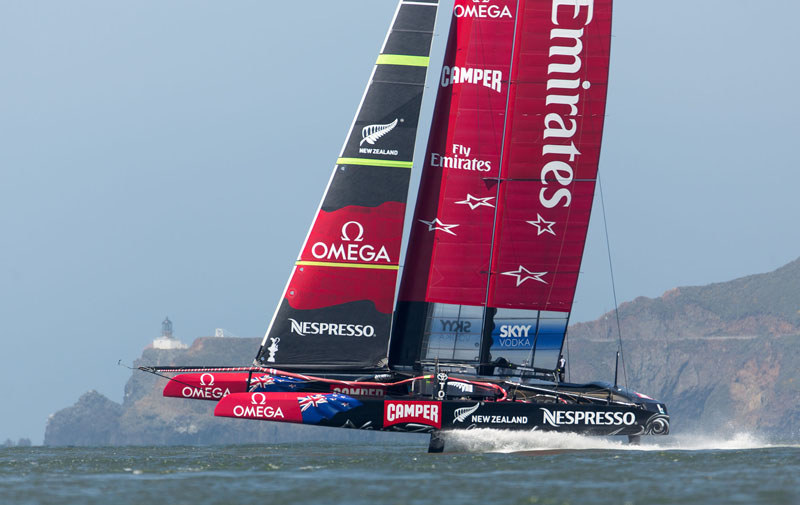
AC Teams Agree to Downshift, Training Continues
In the aftermath of America’s Cup sailor Bart Simpson’s death on May 9, representatives of the three challenging teams and the Cup defender, Oracle Team USA, have met several times behind closed doors to reassess their options going forward. Meanwhile, many within the local sailing community have been outspoken about their suspicions that the AC72s may be unsafe in typical San Francisco Bay conditions. Nothing confirms more clearly that the teams and event organizers share those suspicions than the Wednesday night announcement that upper-end wind limits for racing will effectively be reduced by 50%.

In his comprehensive list of "recommendations" to the fleet, AC Regatta Director Iain Murray specified the following: "Wind Limits: Reduced to 20 knots in July, 21 knots in August, and 23 knots in September, but with additional wind limit adjustments for tide and sea state." The original high end — for which the AC72s were supposedly designed — was 33 knots.
So, dropping to 23 knots for the AC 34 finals in September is a reduction of 10 knots. But there is, of course, a big difference between wind velocity and the actual force of the wind — which goes up exponentially as velocity increases.
We checked in with Latitude 38‘s resident brainiac Paul Kamen, who is a naval architect by trade, for an explanation. "Wind force follows very closely the square of the wind speed, everything else — angle of attack, lift coefficient, density of air — being equal.
"So the wind force in 23 knots compared to 33 knots is (23×23)/(33×33) or 48.6% of the force at 33 knots, or a 51.4% reduction in force."
The bottom line here is that dropping to a 23-knot limit is a major downshift — effectively like limiting a race car to third gear. Don’t get us wrong, we’re not saying we disagree with this proposal, as we too have our doubts about the safety of racing the 72s in the typical booming winds of mid-summer — especially during ebb currents when wind-against-current generates short, steep chop. The last thing we want to see is another tragic accident on the Bay.
In addition to upper-end wind limits, Murray’s extensive list of recommendations calls for independent structural reviews of all boats, and all crewmen are recommended to carry and train on the use of an enhanced complement of safety gear, including hands-free breathing apparatus, buoyancy aids with quick releases, body armor, and underwater crew-locator devices.
It also is recommended that a minimum of two rescue boats support each AC72, staffed by a scuba diver and a rescue swimmer. A paramedic should be aboard one of these boats, and each boat should be equipped with a defibrillator, crew rescue nets, a spine board, a comprehensive first aid kit and more.
Release of this extensive list of recommendations — all of which seem prudent to us — begs the question: If these measures had been in place previously, might Simpson still be alive today?
